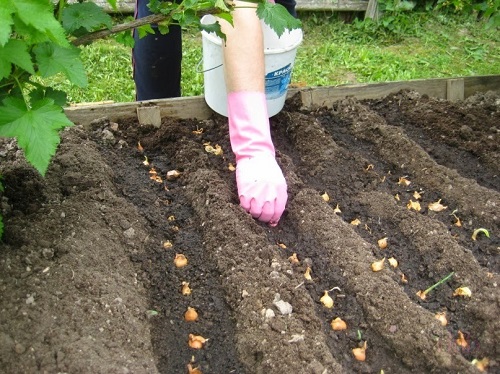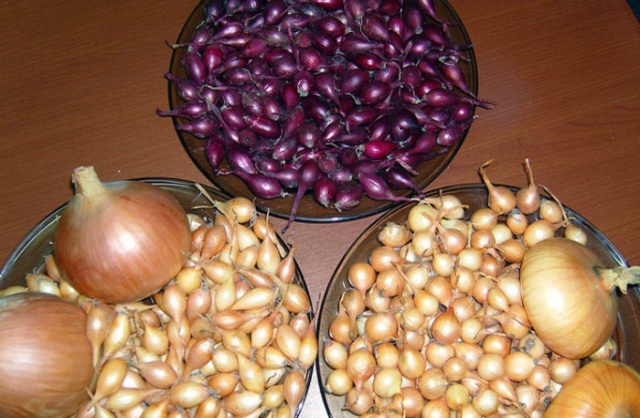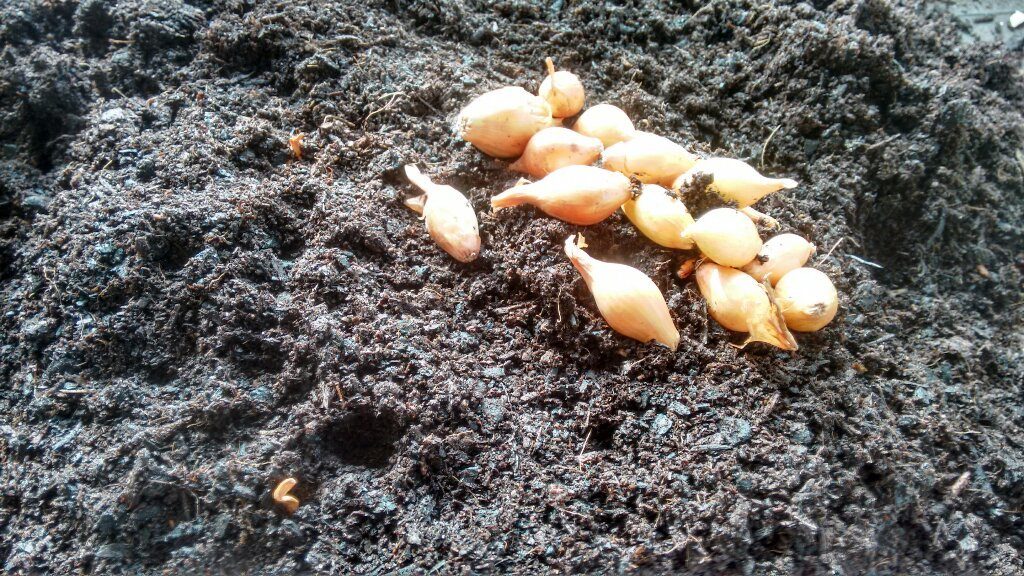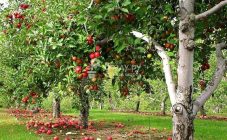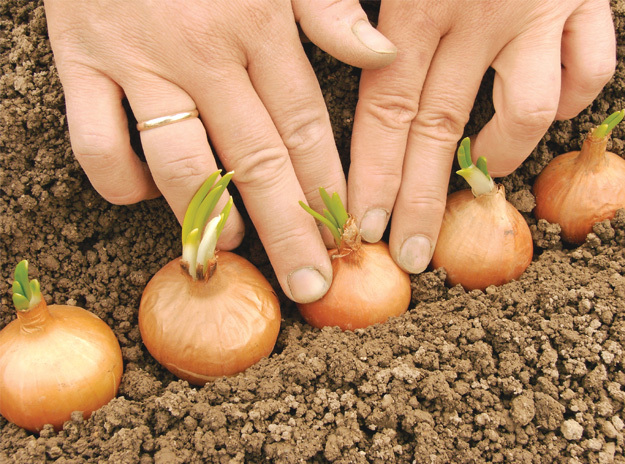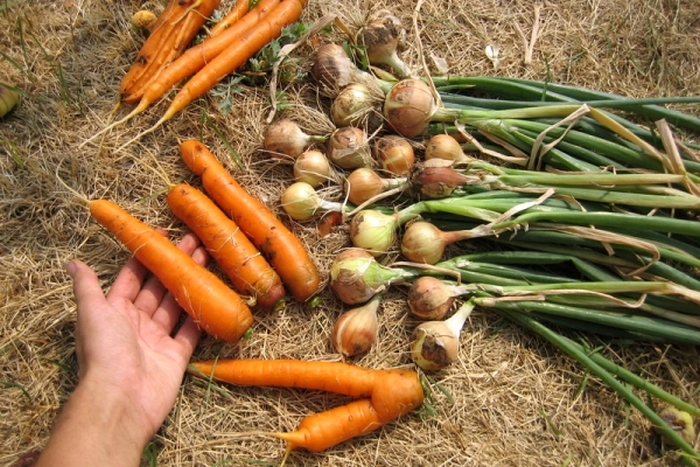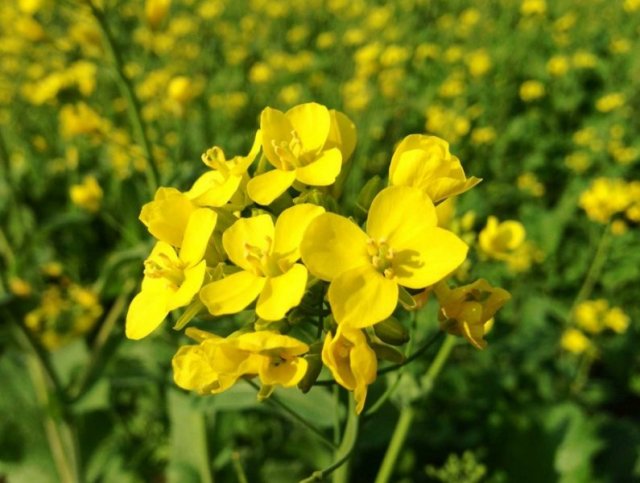Content:
In almost any domestic vegetable garden, you can see at least one ridge planted with onions. The roots of this fruit and vegetable culture, like garlic, are an ingredient in many dishes of national cuisines. In addition, the onion turnip is a component that is added to almost all dishes of our usual home cooking, which are put on every family table by domestic housewives. To grow this crop, you do not need to carry out complex care activities, such as preparing seedlings, hardening, picking and other types of processing, with the exception of maintaining the correct distance between the bulbs when planting onion sets. This advantage is characteristic of many varieties, for example, the Stuttgarter onion variety. Thus, it is only necessary to plant the planting bulbs, knowing at what distance to plant onions, and then carry out timely watering of the plants, which is necessary for this culture, like everyone else.
Description of planting works
There are several ways to carry out planting work:
- landing, which is carried out when the calendar spring comes;
- landing in open ground;
- sowing in late calendar autumn;
- landing in a greenhouse;
- bridge method of disembarkation.
Drop off distance
The preparation of the planting site for onion seedlings should be carried out in the autumn season. The area for growing onions should provide good access to the possibility of sunlight. It is recommended to choose an elevated or level area under the Leek.
In the autumn season, the leveled landing site is subjected to digging to the depth of the blade bayonet. It is advisable to accompany this procedure with the introduction of humus or compost. It is better to refuse the use of fresh organic fertilizers, since an excess of nitrogen will contribute to the active development of greens, which will negatively affect the size of the root crop.
To obtain larger onion root crops, this vegetable should be planted after one crop (no earlier than 3 years later):
- tomato;
- cabbage;
- legumes;
- carrot.
The land dug up with fertilizer must be left until spring. With the beginning of the spring season, two weeks before planting, the soil must be dug up again and left to crumple and acquire a denser consistency.
The list of rules for planting, as well as the distance between the rows when planting a bow must be observed:
- The bed for onions should be as high as possible;
- The depth of the furrows into which the prepared bulbs are planted should not exceed 5 centimeters;
- The average distance of row spacings relative to each other, that is, the distance between onion sets when planting along the entire length of the ridge or, in other words, the total distance between onion beds is 32 centimeters;
- The calculation of the spacing between the planting material is based on the diameter with which each bulb planted is measured;
- So that not a single head grows small, with a dense furrow planting, it needs periodic thinning;
- The planting material should be deepened no more than 1 centimeter deep.
It should be noted that the newly planted bulbous plant does not need watering, since the spring soil should already contain the required amount of moisture.
Other landing recommendations
- With excessive acidity of the soil, one of the neutralizing components is introduced into it:
- wood ash;
- dolomite flour;
- lime;
- ground chalk.
- Simultaneous application of lime and organic fertilizers should be avoided - a certain time interval must be observed;
- In the autumn season, when digging, 5 kilograms of humus is introduced to a 20-centimeter depth;
- The list of spring fertilizers applied by scattering over the soil surface includes:
- superphosphate;
- potassium chloride;
- urea.
- It is not recommended to add organic matter just before planting in order to avoid excessive growth of the upper part of the plant, oppression of the lower one, as well as increased germination of weeds;
- You can disinfect the soil by watering the ridge with a solution prepared on the basis of copper sulfate, a week before planting onions.
How to prepare planting material
Stages of processing the planting material of onion sets:
- Carefully sort out the prepared onion;
- Sort the bulbs according to size;
- Disinfect all onion planting material by placing the planting set in a weakly concentrated potassium permanganate solution (you can also dissolve copper sulfate in an amount of 0.35 grams);
- Dry the processed bulbs completely;
- Withstand onion sets at a temperature slightly above + 20 ° C for three weeks;
- Warm up the onion for 10 hours, placing it in the oven heated to + 40 ° C;
- Process the planting material with growth stimulants;
- Landing in the ground.
About winter landing
The advantages of planting onions before winter are:
- The possibility of harvesting in the middle of summer;
- Less susceptibility to damage from onion flies;
- It is not necessary to maintain storage conditions until the onset of the spring season;
- Until the end of the year, there is still time for additional cultivation of another fruit and vegetable crop in place of the planted onions.
The planting time for winter onions is October. It is necessary to carry out planting work before the soil has completely cooled down. The prepared bulbs must be sorted and calibrated.
It is preferable to use the seed heating method. The standard planting scheme implies compliance with a 15-centimeter distance between the rows, and between each individual bulb - a 7-centimeter distance. The seeding depth is 5 centimeters.
If the air temperature drops sharply, the onion beds must be closed using mulching straw material. With the arrival of warm spring weather, the mulch layer should be removed.
How to plant onions in a greenhouse
Recommendations for planting bulbs in a greenhouse:
- Carry out a thorough loosening of the soil;
- Introduce humus into the soil;
- Add a complex of mineral fertilizers from potassium chloride and superphosphate to the organic matter;
- Choose the variety that is most suitable for growing in a greenhouse;
- Select the largest planting material.
By the beginning of April, it is necessary to perform a number of agrotechnical manipulations:
- Remove snow from the soil;
- Remove the covering material;
- Fertilize plantings twice using nitroammophos;
- Monitor the absence of drafts in the greenhouse;
- If necessary, carry out watering work.
If the planting of onion seedlings is carried out in strict accordance with the recommendations over what distance to plant onions, the quality of ripe root crops will increase significantly. The onion vegetable harvest grown in your own garden will eliminate the need to purchase onions in stores and supermarkets when winter comes.

